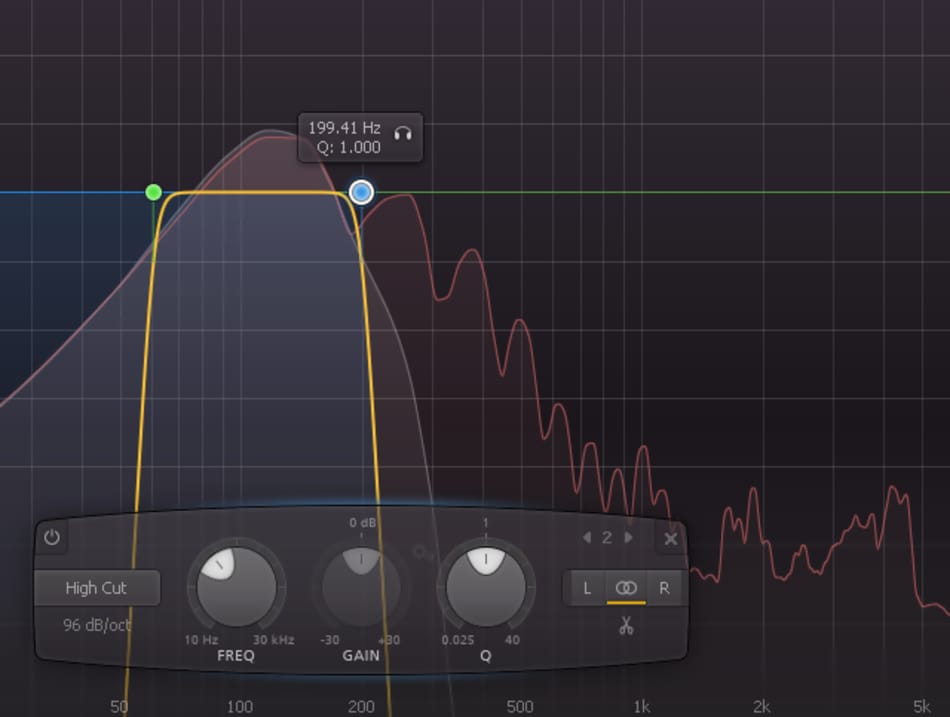

If you're enjoying this article, you might want to check out our article on 10+ FREE Drum VST Plugins to Download Now now for more information.
Splineeq able to eq copy upgrade#
If you appreciate what this plugin accomplishes, you might want to upgrade to the premium "gentleman's version," which includes a Japanese EQ model, numerous additional distortion kinds, and other features like automated tone matching. SlickEQ gets the job done with little fuss for those who require a rapid tone-shaper with easy presets and a modern design. Unfortunately, automation of the controls appears to be impossible - apparently, the plugin must perform too much number-crunching every time a value is adjusted, resulting in loud clicks. Another useful feature is automatic volume leveling, which ensures that the audio going out of the plugin is the same volume as what goes in, preventing thoughtless mixing errors in which the louder sound is regarded as better. Again, subtlety is crucial, and even when toying with the 'calibration' setting, it's impossible to discern any distortion, albeit there is a flavor that stock parametric EQs lack. In the 'output stage' area, there are four possible models for saturation shaping ('silky,'' mellow,' 'deep,' and 'funky'). If you're having trouble hearing it, make sure the EQ Sat button is turned on - it's off by default, and you'd be forgiven for believing it's just a label. Rather than severe heat, subtle touches of saturation are employed for mild harmonic augmentation. The four versions (American, British, German, and Soviet) alter how the EQ plugin controls react rather than the sound itself, and the documentation contains helpful charts for those who want to go into the details. (equalp (cons 'a 'b) (cons 'a 'b)) T same as equalĮqualp(4 4.The TDR VOS SlickEQ, a free EQ that claims a variety of tone-shaping capabilities with a variety of EQ and saturation models, is the first plugin to be evaluated. Comparison of chars and strings is case insensitive.

Comparison of numbers is type insensitive. (equal (cons 'a 'b) (cons 'a 'b)) T equal is usually true for things that print the sameĮqualp is like equal, just more advanced. It behaves like eql for numbers, characters and symbols, but for lists (conses) and strings it tells if their elements It is probably the operator you want to use for general equality. As a rule of thumb, you can think of it as telling you whether two objects look the same (structurally similar, or isomorphic). On some implementations (eq 4.0 4.0) may return true because it is not specified in the standard whether an implementation should keep just one copy of numbers and chars in memory, like it does with symbols).As a rule of thumb don’t use eq on numbers and characters, unless you really know what you’re doing.Įqual is a “saner” comparison function. (eql 4.0 4.0) T type and value of arguments is same (eq 4.0 4.0) NIL Depend upon platform as described in first (accepted)answer (eq (cons 'a 'b) (cons a' b')) This is because different calls are made for both cons so they will obviously be allocated different memory chunksĮql first tests to see if its arguments satisfy EQ, if not, it tries to see if they

b)) (equalp x x)) is true.Įq tests to see if its arguments(represented by the same chunk of computer memory) are same symbol or not. (progn (setq x (cons 'a 'b)) (equalp x x)) is true. (equalp (cons 'a 'b) (cons 'a 'b)) is true. (equalp (cons 'a 'b) (cons 'a 'c)) is false. (progn (setq x (cons 'a 'b)) (equal x x)) is true. (equal (cons 'a 'b) (cons 'a 'b)) is true. (equal (cons 'a 'b) (cons 'a 'c)) is false. (eql "Foo" "Foo") might be true or false. (progn (setq x (cons 'a 'b)) (eql x x)) is true. (eql (cons 'a 'b) (cons 'a 'b)) is false. (eql (cons 'a 'b) (cons 'a 'c)) is false. (eq #\A #\A) might be true or false, depending on the implementation. (progn (setq x (cons 'a 'b)) (eq x x)) is true. Might be true or false, depending on the implementation. (eq 3.0 3.0) might be true or false, depending on the implementation. (eq 3 3) might be true or false, depending on the implementation. Here are some examples from the same page I linked to above: (eq 'a 'b) is false. Two objects are equalp if they are equal if they are characters and satisfy char-equal, which ignores alphabetic case and certain other attributes of characters if they are numbers and have the same numerical value, even if they are of different types or if they have components that are all equalp. A rough rule of thumb is that two objects are equal if and only if their printed representations are the same. The equal predicate is true if its arguments are structurally similar (isomorphic) objects. The eql predicate is true if its arguments are eq, or if they are numbers of the same type with the same value, or if they are character objects that represent the same character. (eq x y) is true if and only if x and y are the same identical object.


 0 kommentar(er)
0 kommentar(er)
